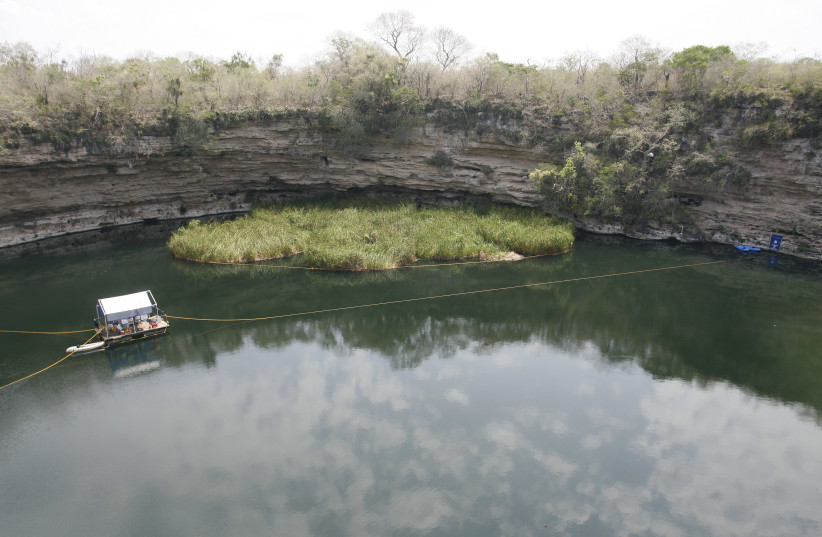Ritual portal to the underworld: New purpose discovered for ancient canoe
An ancient canoe discovered two years ago deep inside an underwater cave near the Mayan city of Chichen Itza may have been placed at the spot seen as a portal to the underworld as part of a religious ritual, according to new research.
At the 12th International Congress of Mayanists held in June, specialists hypothesized about the ritual use of the ancient vessel, based on the results of studies in laboratories in Mexico and abroad.
The extremely rare canoe was found almost completely intact, submerged in a fresh-water pool known as a cenote, thousands of which dot Mexico’s Yucatan peninsula, near the ruins of Chichen Itza, once a major Maya city featuring elaborately carved temples and towering pyramids.
Measuring a little over 1.6 meters in length and 80 cm wide, the canoe was described by the Mexican antiquities institute INAH as “the first complete canoe like this in the Maya area,” and was at first tentatively dated to between 830-950 AD, near the end of the Maya civilization’s classical zenith, but turned out to date to the 16th century, new carbon analysis shows.
The armadillo was seen as a symbol of a deity
Around the canoe, divers found 38 separate skeletal remains, including a female human foot bone and bones from an armadillo, dog, turkey and eagle, according to the website livescience.
 A view of the world’s deepest geothermal sinkhole, or cenote, El Zacaton in the northwestern Mexican state of Tamaulipas May 17, 2007. (credit: REUTERS/Tomas Bravo)
A view of the world’s deepest geothermal sinkhole, or cenote, El Zacaton in the northwestern Mexican state of Tamaulipas May 17, 2007. (credit: REUTERS/Tomas Bravo)In ancient Maya belief, caves and the underwater sinkholes called cenotes were gateways to the underworld.
The armadillo was seen as a symbol for a jaguar deity called ‘L,’ who had a cape shaped like the armored pattern of the armadillo shell, according to Mexico’s National Institute of Anthropology and History (INAH).
The researchers think that the armadillo remains might be an “allusion to the entry of the [armored animal] into the underworld,” according to the statement.
The combination of armadillo bones with the find of a human foot gave rise to the theory that the canoe was used during a ritual and placed in the cave on purpose.
“There are known images in Mayan ceramics in which [the armadillo] appears as a ‘stool of the gods,’ with characters that place their feet on it,” Alexandra Biar, an archaeologist from the French National Center for Scientific Research (CNRS) said. “This would be directly linked to the archaeological evidence observed in the cenote,” with the armadillo serving as a manifestation of the deity.
Reuters contributed to this story.





Comments are closed.